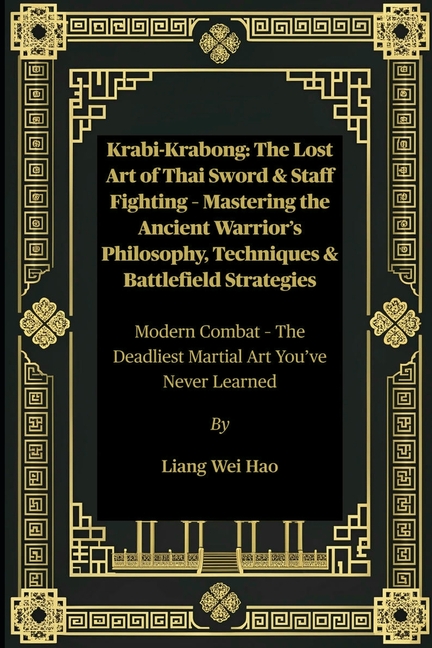Description
This book explores the ancient Thai martial art of Krabi-Krabong, a combat system developed for real battlefields rather than sport. Focusing on practical sword and staff techniques, it reveals how warriors trained to survive against multiple armed opponents using fluid movements and ruthless efficiency. The methods were honed through generations of warfare, creating an integrated system where every strike, block and step served a clear purpose in life-or-death situations.
Unlike many modern martial arts, this tradition maintains its direct connection to actual combat applications. The training emphasizes adaptability, teaching fighters to transition seamlessly between weapons or empty hands as circumstances demand. From basic stances to advanced battlefield strategies, each element is presented with straightforward explanations of how and why it worked in historical conflicts. The techniques remain surprisingly relevant today for understanding practical self-defense principles.
Beyond physical skills, the book examines the mental discipline required to face lethal threats calmly. It explores how warriors developed situational awareness, controlled their fear, and made split-second decisions under extreme stress. These psychological aspects offer value extending far beyond martial arts, providing tools for managing pressure in various aspects of modern life. The philosophy stresses efficiency over showmanship, with techniques stripped to their essential, functional core.
Preserved through centuries of warfare and cultural change, this martial art represents a living bridge to Thailand's warrior heritage. The book presents the complete system as taught by traditional schools today, from fundamental weapon handling to complex combat scenarios. While respecting historical roots, it also considers realistic applications for contemporary practitioners. The result is a thorough guide to one of Southeast Asia's most effective yet little-known fighting traditions.
Product Details
- Jul 6, 2025 Pub Date:
- 9798291211311 ISBN-10:
- 9798291211311 ISBN-13:
- English Language




